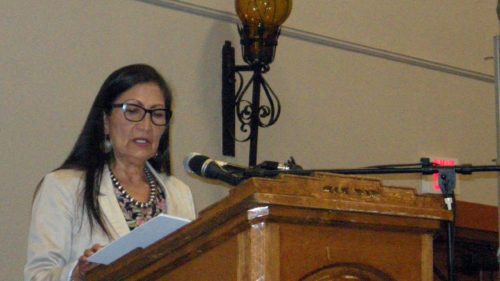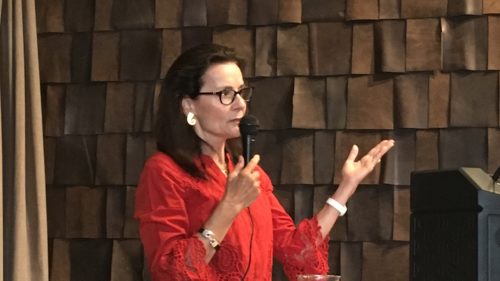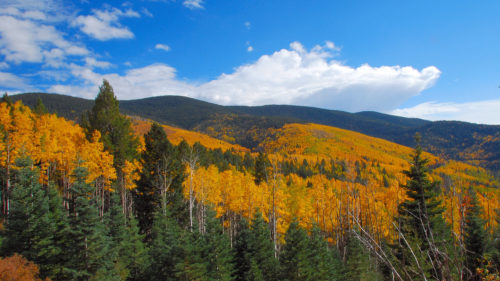The Clovis meeting started adorably with Commissioner Beth Ryan’s daughter leading the group in the pledge of allegiance, stealing the show right off the bat.
After the order of business was taken care of, the commission got down to the agenda. First on the list was reserving elk licenses for nonprofit groups which was swiftly approved by the commission.
Agenda Item number 8 dealt with the operating budget for fiscal year 2020. Meetings between the department and commission will happen in June and July to dive into the details.
Commissioner Dick Salopek asked about the Pittman-Robertson money and which fiscal year it would appear in. Paul Varela, who was presenting the budget, explained that part of the PIttman-Robertson money was received in April.
Commissioner Ralph Ramos asked about a report on the habitat improvement stamp program so the commission could know how that money was spent – a report will be provided on that program in June and July. Ramos added that he would like to see more than just the numbers, but also where the restoration projects have taken place by region.
Agenda item 9 gave an update on the Roswell office complex. The design of the complex is 95 percent complete and will be 100 percent complete in mid-April. In early April the department held an informal open house last weekend where they received some feedback from people in attendance which was positive about the complex.
The NEPA study has started and the next step is signing a construction bid. The department signed a 50 year lease with the option to renew for $1 to which Chairman Paul Kienzle exclaimed “finally we got a bargain!”
The complex is a duplicate of the Albuquerque office and completion is expected sometime early next year, breaking ground in July. Commissioner Ramos thanked the department for the presentation and said he likes how the standard of a building has been set here in New Mexico following the Albuquerque model.
Next on the list of business items was Lance Cherry presenting an update on the very exciting hunter education program and education opportunities provided by the department. In the past year the department held over 330 fishing camps, reached over 9,000 students and over 4,500 adults, and partners with over 80 school programs. All of this paid off with increased angler license sales at the department. Cherry attributes the success of the program to reaching out not just to youth but to the entire family.
The archery program averages 20,000 student per year, with camps and events reaching more than 10,000 per year. Over 1,000 students registered to compete in the 2018 state tournament this year. The tournament continues to set new participation records, with the archery program getting recognized as the fastest growing program in the west.
Some of the challenges the department faces around hunter education includes competing interests, class capacity, long waitlist, the fact that many schools had abandoned hunter education and lack skills based training. To tackle these issues the department rolled out online hunter education, and reengaged with schools – this included grants that pay teachers for their time. Thanks to these initiatives the program has better retention now and the department is entering phase two. This includes targeted marketing, increase skills based camps, continuing after school hunter education program, a free online option, and a streamlined course. The department is also evaluating other state’s programs to make sure ours as effective as it can be.
After these amazing updates from the department, Commissioner Ramos complimented the great efforts of the department. He emphasized that continuing to get kids involved and learning the proper use of hunting equipment is really important.
Chairman Kienzle added, I think we’re doing a great job with kids and young people but wanted to meet with Cherry about getting adults and young adults outside. He said there are probably a lot of adults who are interested but it [hunting] may be a black box, where it’s something they’re interested in doing but have no idea where to start.
Cherry went on to say that the department has a full blown curriculum online that is getting into the schools, as well as the wildlife conservation presentation that officers across the state put into the schools. He emphasized that that doesn’t mean they won’t continue to improve and enhance those efforts. New Mexico is currently bucking the trend nationally of hunter participation going down.
Agenda item 11 was presented by Stewart Liley and gave an update on the habitat restoration project on the Colin Neblett Wildlife Management Area (wma). The goal of the project was to restore wet-mixed conifer forest south of Eagle Nest Lake to improve wildlife habitat and increase forest resiliency to wildlife through thinning and prescribed fire. The project also restored aspen regeneration.
Timeline:
- 2016: hand thinned 538 acres to reduce forest fuels and promote aspen regeneration
- 2017: hand piled 41 acres of forest thinning slash for prescribed fire
- 2018: implemented prescribed fire during high snow moments
Next up is an additional 497 acres of thinned material on the Colin Neblett WMA. The department is currently funding prescription burn operations on United States Forest Service and Bureau of Land Management lands throughout New Mexico.
Commissioner Beth Ryan commented that this is an extremely important policy to have and that she hopes the federal government takes notice, and concluded by thanking the department for taking the lead on these projects.
Chairman Kienzle added when you drive to Mescalero you can really see the devastation that fire caused so anything we can do to reduce that is great.
Liley added that the department does extensive work on Forest Service land, highlighting that the department is committed to almost $10 million across the state of New Mexico and a big chunk of that is federal land because they’re the biggest landowner in New Mexico.
Agenda item 12 kicked off the initial discussion on barbary sheep, orxy, and persian ibex rule. Liley presented the changes and started with ibex. Changes include adjusting seasons for calendar dates, adding a new hunt, and helping to maintain a stable ibex population. The department aims to create new hunts so it is still a quality hunting experience but so the department can also manage the population. A stable population size would be about 100 – 200.
Liley then discussed Barbary sheep, saying that licenses have increased drasticaly in the past couple years – not because of draws but because of over-the-counter licenses.
Commissioner Ramos asked about the westside 34 unit where he believes there are more hunters for the male round harvest than the ewe harvest, and that the original intent was to lower that population to introduce bighorn sheep.
Liley explained that the department’s hope is to shore up herds and then to increase populations in other places, they’re hoping to move sheep to GMU unit 34 in the fall. After a question from Commissioner Ramos, Liley responded that the department will keep the Barbary sheep hunt on the west side even if desert bighorn move in there.
Additional changes for barbary sheep includes adjusting seasons for calendar dates, increasing draw licenses by 25 percent in response to an increasing population, splitting hunts to distribute hunters, and increasing total hunting days from 28 to 35.
Changes to the Oryx rule include adjusting season for calendar dates, adding 4 new hunts to accommodate more hunters, increasing once in a lifetime hunts from 270 to 585, increasing broken horned hunts, and increasing veteran hunts. The proposed changes include modifying the veteran hunt to be any New Mexican veteran, maintaining the youth hunt, and maintaining mobility impaired opportunities.
After wrapping that item up, it was on to Agenda 13, the turkey rule. Changes include adjusting calendar dates, making sure youth falls on a weekend.
The department wants to create a spring youth hunt on Washington Ranch in GMU 30 for one weekend during the regular season, change number of youth only tags in GMU 2A Rattlesnake Canyon closure area from 5 up to 10, and opening additional areas for spring turkey. The final rule will be heard in June.
The last public item on the agenda was the migratory game bird rule. Changes include increasing pintail bag limit from one back to 2, and changing based on calendar dates. For sandhill cranes the proposal impacts the Middle Rio Grande Valley to move the dates to when more cranes are present because the harvest level haven’t been hit in recent years.
We encourage all of our members to keep up to date with the department rule periods and take part in the management of your wildlife.



